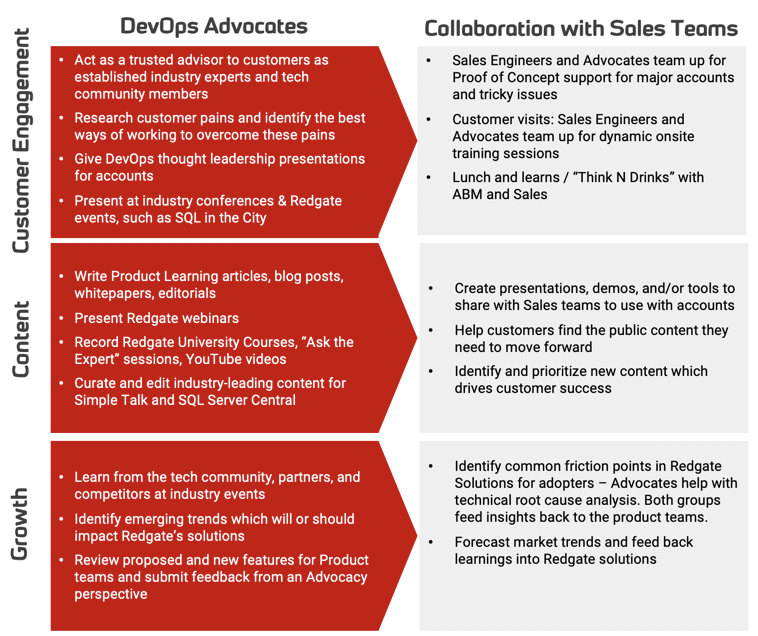What the Decline of SQL Server Quality Means for Developers and DBAs
‘Is it just me, or is SQL Server quality slipping?’
I asked myself that question for couple/few years until I faced up to it: SQL Server …
Read MoreThe other day, I was looking back at an excellent blog post my colleague Jamie Wallis wrote about what Product Marketing Managers do at Redgate. I really like the chart he created which explains how Product Marketing Managers work with Product Managers – what each role focuses on, and where they collaborate.
I realized that my own role as an Advocate can also be hard to understand.

I did a podcast episode a while back on the topic – at the time, my role was called “Evangelism” rather than “Advocacy” – but I don’t expect my colleagues to listen to a podcast to figure out what value I can provide.
I work in a very collaborative role, but I’m not special: all roles which work with databases are increasingly collaborative. Even if you act more as a service provider than a partner for a group, it is very beneficial for you to help important groups in your business understand the value you provide to the organization. Taking the time to do this helps build your relationships with others:
There’s another hidden benefit of writing this out. It may remind you that your job is a little bit cooler and more important than you realize, by helping you see the big picture.
I asked Jamie if I could borrow and the diagram which he used in his post. He was happy for me to use it. One of the key partnerships that I have at work is with Redgate’s sales team, so I thought specifically of how I work with them when creating this first draft at outlining what I do, and how I can help them.
In this case, the sales team is my audience for explaining how I work, so I didn’t need to outline what they do as much as I needed to outline what I do on my own, and in collaboration with their group.

There’s a few way to share things like this which can help:
I’m not “in charge” of much of anything but myself these days – and I’m totally OK with that. (Managing other people is hard work!) I still went to the trouble to make this diagram. I’ve shared this with my team for input. I also shared this with my manager and let her know how I’d like to use this internally with our sales teams to help them understand our role (especially new folks coming on board, but also people whom I just haven’t worked with as much yet).
Earlier in my career, I tended to see activities like this as something that a team lead or manager would do. I didn’t really see it as my business.
Now, I have changed, and the world has changed a bit, too. It’s really everyone’s business to identify opportunities like this to represent your work a little better. Whenever you find a chance to do something to help connect to your colleagues and customers more clearly, it’s worth mapping out a little time to take care of that task yourself!
Copyright (c) 2025, Catalyze SQL, LLC; all rights reserved. Opinions expressed on this site are solely those of Kendra Little of Catalyze SQL, LLC. Content policy: Short excerpts of blog posts (3 sentences) may be republished, but longer excerpts and artwork cannot be shared without explicit permission.